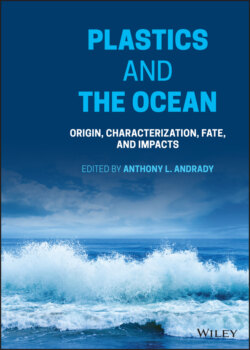Читать книгу Plastics and the Ocean - Группа авторов - Страница 22
1.4 Sustainability of Plastics
ОглавлениеThe notion of environmental sustainability is a complex one (well outside the scope of this chapter) and according to its original definition, refers to a mode of development that “meets the needs of the present generation without compromising the ability of future generations to meet their own needs.” It is a laudable, qualitative statement, but the strategy to achieve this objective is not clear, especially where development involves depleting a fixed reserve of a natural resource such as rare earth elements or oil. Not only is the number of future generations not specified, but they are also assumed to have the same set of needs as the present generation does. A tempting approach is to “decouple” growth in GDP from environmental impacts (Luo et al. 2019), allowing sustainable development to proceed unhindered. This, however, is not realistic (Ward et al. 2016), especially in the future plastics industry.
But what can be realistically implemented to improve the sustainability of plastics in the near or medium term? The goal should be to ensure that the rapidly depleting resource base for resin production lasts long enough for technological advances to perhaps make those resources obsolete by discovering substitutes. Finding ways to minimize the environmental impact of plastics, given the future increase in production levels, is also critical to ensure sustainability. Specifically, three strategies towards sustainability deserve close attention.
1 Energy economy: Plastic resin manufacture and processing into consumer products needs to be more energy‐efficient and, wherever possible, rely on renewable energy instead of conventional fossil‐fuel derived energy. Innovations to capture process waste energy such as low‐grade heat for reuse needs to be enabled.
2 Feedstock economy: Using the minimum amount of plastic materials to deliver the necessary functionality for the performance of the product, needs to be implemented. Conserving fossil‐fuel feedstock by material recycling (as well as chemical or energy recycling) of post‐use plastics and where feasible, by substituting bio‐based plastics in place of fossil‐fuel‐derived resins should be incentivized.
3 Minimizing toxicity: Minimizing the release of toxic chemical by‐products from resin production, processing, use, and waste disposal of plastics especially into the ocean environment, is a priority. This requires urgently substituting some of the toxic legacy additives with known adverse ecological impacts, with non‐toxic alternatives. Also, capturing CO2 and process gaseous emissions for conversion into useful products to reduce the environmental footprint of the material should be encouraged.
In 2020 with the COVID‐19 pandemic slowing down economic activity, the energy demand also decreased, with that for oil and coal dropping by 7–8% each, accompanied by a consequent decrease in the global carbon emissions. Despite this respite, the world energy demand is still expected to grow by nearly 50% by 2050 to reach 240 Quads (quadrillion BTU; EIA 2020), led primarily by industrial growth in Asia. While more renewable energy will be available in the future, their percent contribution to the overall energy supply will still be only about 16%, as opposed to the present 11%. Therefore, conserving energy, along with using more renewable energy and improving efficiency in plastic processing (for instance, with all‐electric molding technology) will be important in making plastics more sustainable in the future.
Moves to encourage economy in using energy and material, conveniently align well with good business practices, and should therefore be driven to some extent by future market competitiveness. There are many examples, such as the down‐gauging of plastics film or improved plastic bottles; with the 0.5L PET soda bottle, a 48% decrease in weight was achieved over the last decade, without compromising neither the functionality nor consumer appeal, saving valuable resin material resources. Similarly, reductions in secondary packaging of goods with minimal impact on the level of protection afforded by the package, have contributed to conserving material.
Two major strategies that conserve valuable fossil‐fuel resources and reduce the embedded environmental impacts are worth emphasizing: (i) extending the service life of plastic products; and (ii) increasing the use of bio‐based plastics, reducing the dependence on fossil fuel in manufacture.
